Capture the yeast within
June 5, 2007
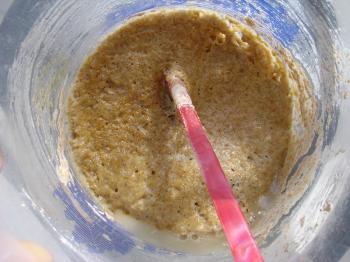
That’s a chopstick for stirring, not a straw for slurping.
My girlbud and twisted lifecoach K’tje has been baking bread for hoards of guests and is in desperate need of yeast. Fresh yeast. Down in Occitania it seems that many a masterbaker is in fact a boulanger truquĂ©. Dang faker bakers don’t even have a proper block of yeast on the premises! K’tje asks if I’ll bring some on down next time I come by to water my garden. But considering the amount of yeast this girl piles through, it’s prolly better she learn how to make her own dang yeast.
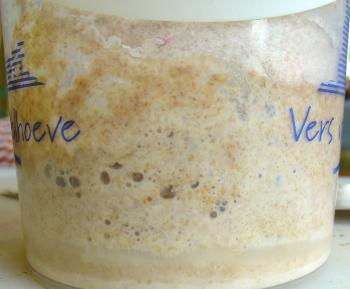
A few days on, evidence of the breath of life
This quote is from Allrecipes.com, used entirely without permission.
Wild Yeast and Starters
Before yeast was available in grocery stores, bakers kept colonies of yeast for making bread. These colonies were known as starters, and were sometimes passed on from generation to generation. You can make your own starter using commercial yeast, by using potato water (from boiled potatoes) to attract and feed wild yeasts present in the air around us, or by using the yeast found on the skins of organic grapes or organic raisins. Keep the starter in a one-quart crock, jar, or airtight container.
How to capture a wild yeast
Mix equal amounts of flour and water and let sit in a warmish place. Indoors on top of the electric fridge is ideal. I mention electric fridge because some people I know are considering making one of those non-electric Nigerian pot-in-pot fridges. Those things are only for cooling, they’re incapable of warming up the environment and therfore unsuitable for growing yeast colonies.
In about a day you should start noticing signs of life (bubbles, maybe a slightly funky smell) give it a stir and add some more flour. Keep doing this for about a week, each day stirring and adding flour (and possibly some water, if it feels too dry to stir).
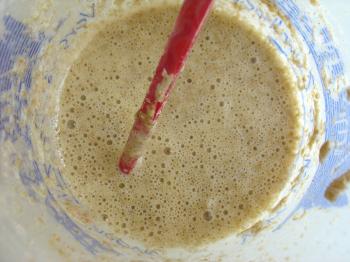
The bubbles come from little yeasts breathing
At a certain point, you’ll have grown too much yeast colony because we’re not big on the carbs anymore and we don’t eat sourdough pancakes everyday. Common practice is to throw a bit of the beige gold away. Wasteful! Once you have baked with your own yeast and have some notion of its potency, there’s nothing stopping you from placing large blobs of it in decorative recycled jars and giving them to your friends as presents.
You know that I’m kidding, right?
Alternatively you can slow down the process by putting the colony in the fridge. Feed it once a week. When you want to use some, take out a blob plus some (because this stuff isn’t as strong as the industrial stuff) and re-animate it again by putting it in a warm spot (above the fridge) and feeding it for a day or two.
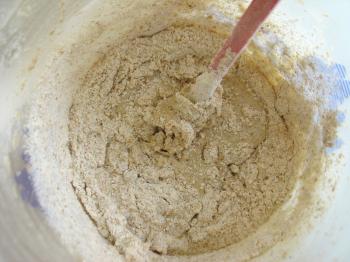
If you can’t stop kneading beige things, yeast is so needy that it’s more like keeping a pet than leavening.
Making yeast starter links: They’re all from one website, because I really like the simplicity of these recipes the best. Plus, I’m suffering from CO2 information overload and don’t particularly want to hear about it in my yeast recipes as well. ‘Nuff said!
- yeast Basics
- Wild Grape starter for hippies
- Basic Sourdough Starter Recipe
- Sourdough II
- Amish Bread Starter for nerds
debra at 21:21 | | post to del.icio.us

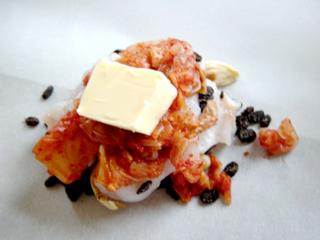
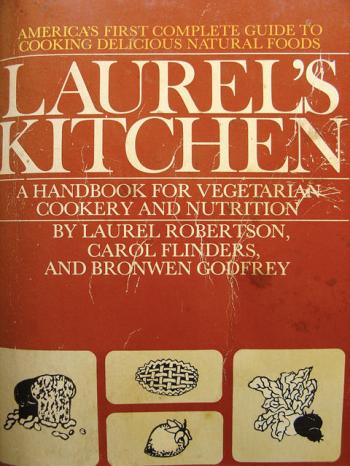
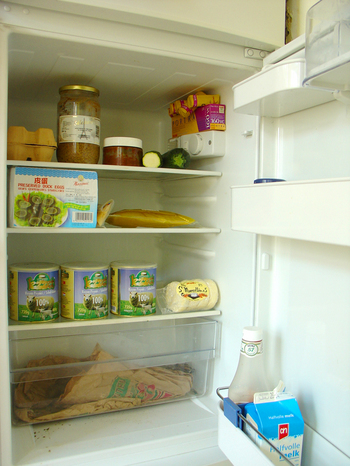
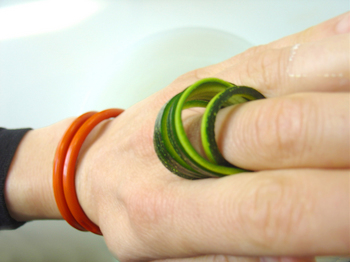
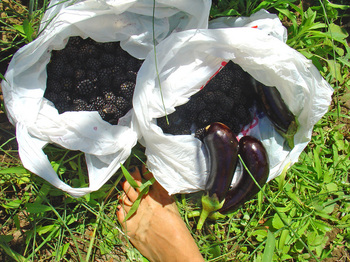
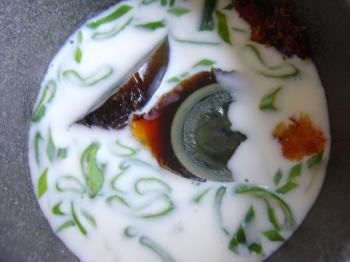
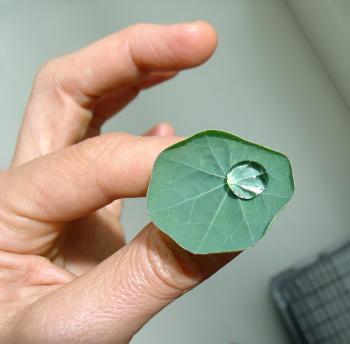







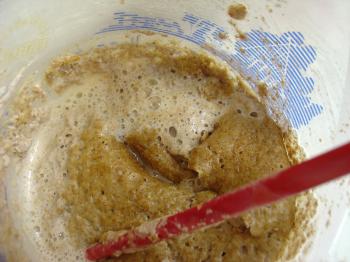
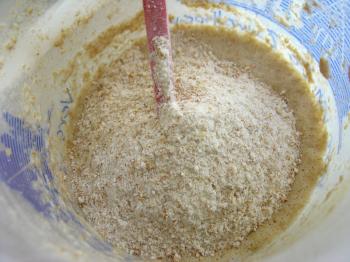



Debra,
I recall that Bob Scher, the cantor at Temple Emanuel in San Bernardino, allowed that he would go to the ancient* vineyards near Cucamonga to collect air yeasts to make his starter for bread making.
* These were among the oldest vineyards in California at the time; they’ve since been replaced by houses.
Comment by dad — June 8, 2007 @ 7:56
Yes starting with grapes is the best. I haven’t in this batch and felt guilty the other day and fed them sugar. Sick.
Comment by Debra van Culiblog — June 8, 2007 @ 9:13
I followed a recipe I found online for “wild grape starter” and it asked that I crush the grapes and leave them in a jar covered in cheese cloth for three days at room temperature before adding any flour. I did this but after two days the top layer of the crushed grapes is pretty well covered in a white fuzzy mold. This is not ideal, right? What am I doing wrong? I am in St. Louis Missouri where it is hot and humid–could this have something to do with the mold growth instead of yeast growth? I can’t find anything online that will discuss or even warn someone who is trying to cultivate wild yeast of this mold thing. I have no idea if it is normal.
Thanks,
Made
Comment by Made — August 27, 2007 @ 1:06
No, that white mold doesn’t sound good at all. I saw a similar method, but I don’t trust it.
Here’s why:
From what I’ve read, this is how it works - you use Flour without sugar, because yeast loves flour, and can use it for energy to grow. Other beasties (such as most bacteria) can’t process the carbs directly (or as easily at least), but they do like the sugar.
So… it only makes sense to me that if you break the grapes and release all those sugars from within, you’re giving the non-yeast beasties a perfect home.
I personally followed something similar to what’s described here: http://www.motherearthnews.com/Homesteading-and-Self-Reliance/1980-09-01/Foraging-For-Wild-Yeast.aspx
Yesterday I found some wild grapes near where I just started trail walking, and they’re perfectly matured (with a nice yeast coat). Since I just read about making my own starter the day before, I figured I’d try it.
So, I brought home a handful of grapes, placed them in a quart jar, put a cup of whole wheat flour in, and stirred in 1 cup of filtered and slightly warmed water. Oh, and I used a dry-board eraser to mark the glass where I filled it to.
It hadn’t really risen that much overnight. This morning I stuck it in front of a sunny sliding glass door.
This evening when I checked it (about 24 hours later), it was all puffed up. There was a 1/2 layer of water at the bottom (with the grapes in it), and a ton of (yeasty?) flour at the top. I guess I hadn’t thought far enough into the future. I had to dump all but 1 cup of it, because there’s not enough room in the quart jar for it to expand again. Oh well. :-)
One more note: I read that it might double the first day (or first couple) and then it might seem like it’s dead. If this happens, there’s a possiblity that it was some specific (safe) bacteria that caused the rise. Don’t fret, if that happens, get it going again by adding a some vinegar with the water. The acid will kill off all the bacteria (bacteria doesn’t like acid environments, whereas yeasts actually create acidic environments, and don’t mind it.)
Nothing should be fuzzy. I’d start fresh the non-juice way.
Comment by Mo Gryph — August 30, 2007 @ 5:08